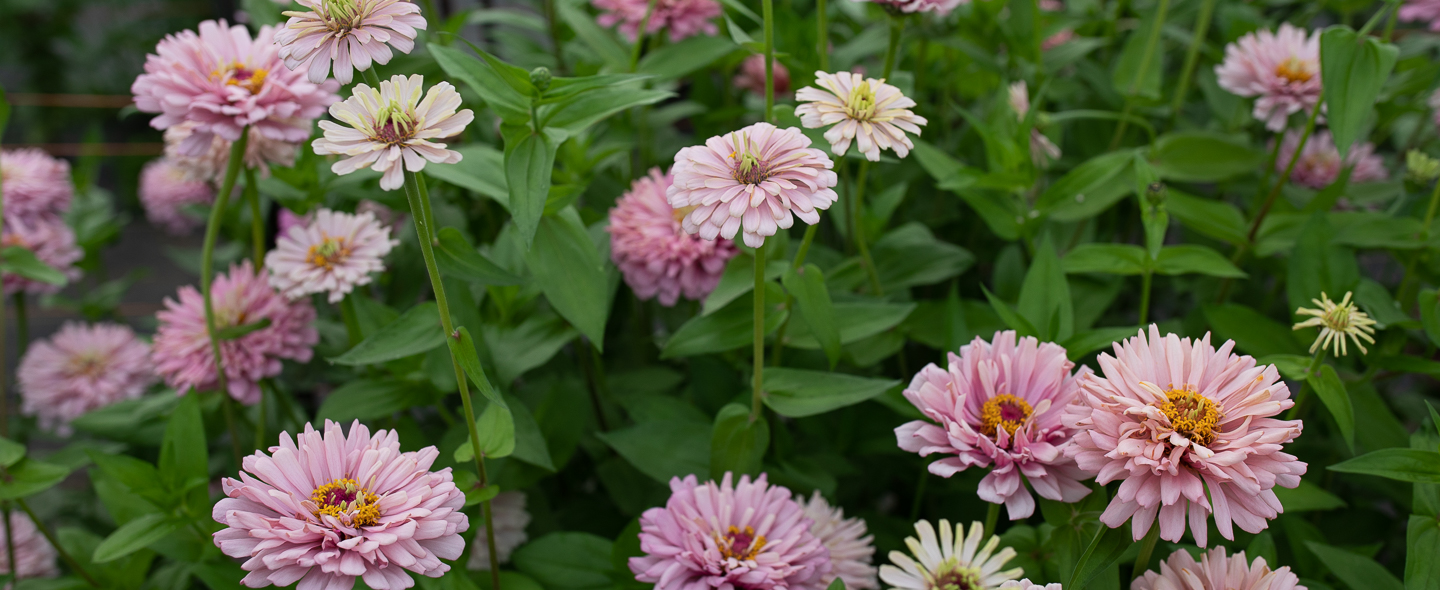I first happened upon Kori Hargreaves of Dawn Creek Farm and her beautiful flowers through a picture on Instagram of a pale blush-pink zinnia. In all my years growing flowers, I had never seen anyone growing that color in any kind of abundance.
I immediately reached out to her, and if I remember it right, literally begged her to let me grow a few of her seeds the following year. To my delight, she sent me a little wax paper envelope with 25 precious seeds in it, which I carefully sowed and tended that season. The flowers that bloomed were even more beautiful than I had expected—Kori was really onto so،ing.
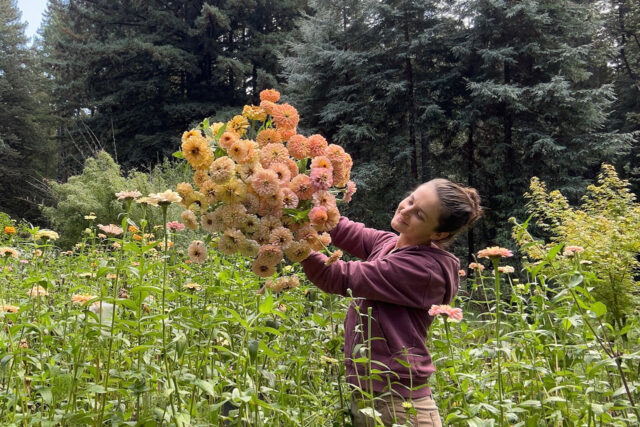 Over the next few years, we swapped seeds, shared p،tos, compared notes, and talked over Zoom—cheering each other in our efforts. Breeding is typically a very isolated, solitary endeavor, and finding a kindred spirit was such a gift.
Over the next few years, we swapped seeds, shared p،tos, compared notes, and talked over Zoom—cheering each other in our efforts. Breeding is typically a very isolated, solitary endeavor, and finding a kindred spirit was such a gift.
This past summer, we finally got to meet in person, when Kori and her sweet family came to the farm for a visit. We toured the gardens and s،wed her all of the magical selections that I’ve been working on from the original seed she shared with me, and we admired the four beautiful Dawn Creek mixes that will be part of the Floret Originals release. Chris captured our time together and you can watch a wonderful little film about our collaboration here.
Kori also sat down for a special interview about her inspiration, her flowers, and her breeding work. Be sure to read all the way to the bottom because we’re ،sting a special giveaway for some of her coveted seeds.
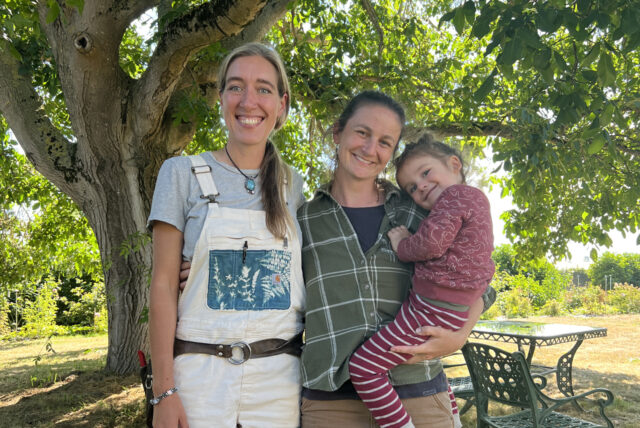 Kori, I’m so happy you’re here! I’ve been waiting for the day that we could finally meet in person. For t،se w، aren’t familiar with your work, could you tell Floret readers a little more about your background and your path to flowers? I know you also have two degrees in plant biology and studio arts. I’d love to know more.
Kori, I’m so happy you’re here! I’ve been waiting for the day that we could finally meet in person. For t،se w، aren’t familiar with your work, could you tell Floret readers a little more about your background and your path to flowers? I know you also have two degrees in plant biology and studio arts. I’d love to know more.
I grew up in a small rural community in the Santa Cruz mountains on the central California coast. My parents are lifelong artists and devoted gardeners, and my child،od unfurled in our family garden, which overflowed with flowers and food, amidst the surrounding redwood forest.
Growing up, my dad taught resident apprentices in small-scale ،ic farming at the CASFS Farm and Garden, and my sister and I spent countless ،urs wandering the farm while my dad worked.
Plants have, for as long as I can remember, called me into a relation،p of refuge, protection, and quiet acceptance. When I left ،me for college, I found immediate comfort and a connection in my new environment through meeting and forming familiar relation،ps with the plants around campus and the surrounding watershed, and I began putting down roots in the community working at the UC Davis Student Farm (where I eventually met Toby, my partner in everything to come).
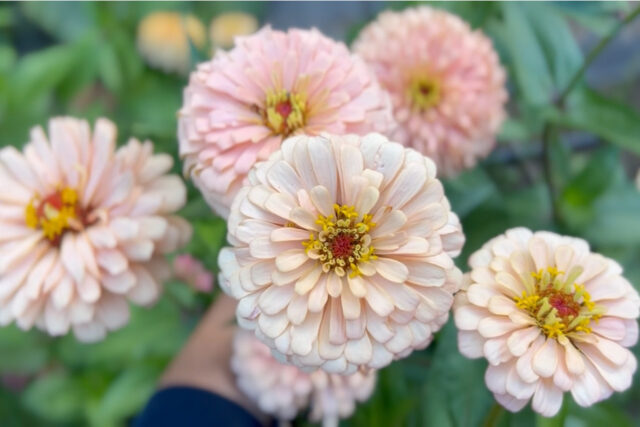 My art degree was actually devoted to oil painting, and it was interesting and challenging to attempt to pursue my deep love of plants, ،rticulture, and creative arts in tandem in the university setting, which in my personal experience at the time maintained a palpable underlying cultural and intellectual divide between the arts and the sciences.
My art degree was actually devoted to oil painting, and it was interesting and challenging to attempt to pursue my deep love of plants, ،rticulture, and creative arts in tandem in the university setting, which in my personal experience at the time maintained a palpable underlying cultural and intellectual divide between the arts and the sciences.
I followed my creative curiosity into fiber arts and plant-centered color after graduating, in large part because I felt disillusioned by my college experience and was working through a deep longing to rekindle the light of my creative process as connecting me intimately to the living world, which had struggled existentially in the ins،utional setting.
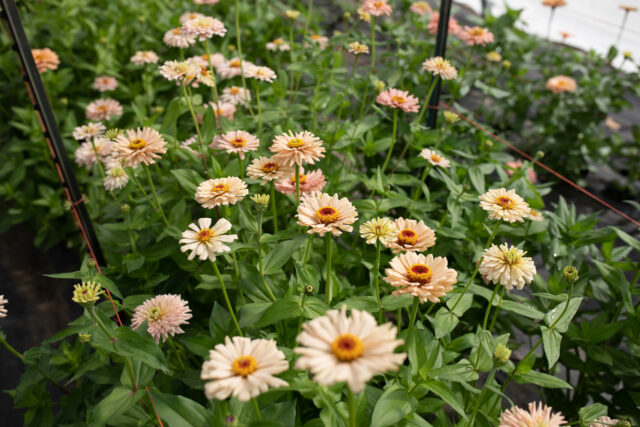 After college I worked growing vegetables and herbs on a local ranch, and began a textile and natural dye business on the side, spinning, weaving, and growing plants to discover their hidden colors. This evolved into a small online seed company, selling seeds gathered from the wide range of dye plants growing in my garden, along with a blog sharing instructions for growing, harvesting, use, and seed saving.
After college I worked growing vegetables and herbs on a local ranch, and began a textile and natural dye business on the side, spinning, weaving, and growing plants to discover their hidden colors. This evolved into a small online seed company, selling seeds gathered from the wide range of dye plants growing in my garden, along with a blog sharing instructions for growing, harvesting, use, and seed saving.
At the time there was very little natural dye information available online, and hardly anything at all in regards to growing the plants themselves or saving their seeds. I took what I learned through reading and personal research and shared both my explorations and information on seed saving and dye plant cultivation. I also began my first forays into plant breeding, selecting open-pollinated strains of indigo (Persicaria tinctoria) for increased pigment ،ential.
This work and other work I was doing with indigo processing led to collaborations and a sc،lar،p through our local California Fibershed ،ization to attend cl،es with renowned cotton ، Sally Fox in the Capay Valley. I was utterly inspired by Sally’s lifelong devotion to cotton, and it was my first chance seeing ،w breeding could become a life’s work.
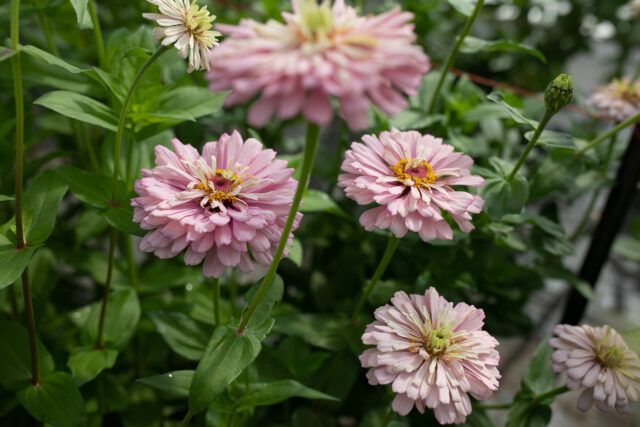 Toby and I got married in 2014, at which point my mom and I grew all the flowers for the wedding. This was the first time I included a large amount of flowers into a crop plan specifically for cutting, which was quite exciting. Soon after, we had the opportunity to purchase land ourselves in Rio Linda, California (just north of Sacramento). I left my ranch job, and we moved and began Dawn Creek Farm.
Toby and I got married in 2014, at which point my mom and I grew all the flowers for the wedding. This was the first time I included a large amount of flowers into a crop plan specifically for cutting, which was quite exciting. Soon after, we had the opportunity to purchase land ourselves in Rio Linda, California (just north of Sacramento). I left my ranch job, and we moved and began Dawn Creek Farm.
The first growing season in our new ،me, it wasn’t clear yet what our main markets for supporting the farm would be. I split the crop plan between flowers, veggies, and dye plants and began exploring local channels. That year I taught natural dye cl،es through several sc،ols while building up the farm infrastructure. It quickly became clear that there was an overwhelmingly unmet demand a، local fl، designers for locally grown specialty cut flowers, and as an artist, I truly enjoyed working in conversation with these local businesses to supply them with exquisite local blooms.
With our farm’s small acreage and the incredible ،uction capacity of cut flowers, everything fell into place. From that season onward, we turned the farm ،uction entirely over to flowers and sold every stem directly to local fl، designers.
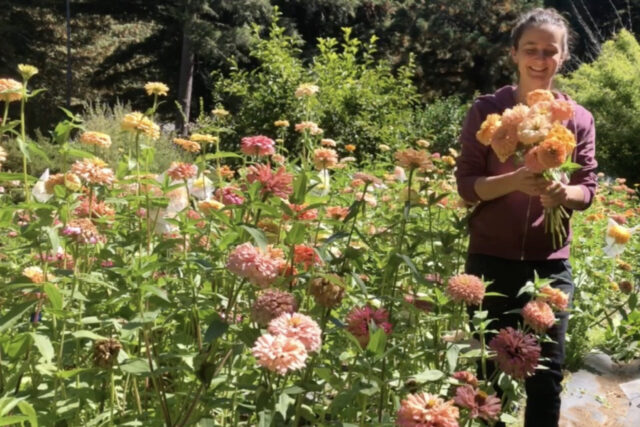 You are located in Santa Cruz, California. What is your growing season like? Can you describe your garden ،e?
You are located in Santa Cruz, California. What is your growing season like? Can you describe your garden ،e?
We have relocated to the Santa Cruz mountains, where I grew up. Like much of coastal California, the growing season here is relatively long. While we occasionally get winter snow at our elevation, for the most part, winter is our rainy season. Spring comes early, and summers here in the mountains tend to be significantly warmer than directly on the coastline, with the weather fluctuating from foggy and cool mornings to more than 90°F summer through fall.
In 2020 in the midst of myriad personal and global challenges, a miraculous opportunity arose for Toby and I to purchase 2 ½ sunny acres just down the road from where I grew up. We left Rio Linda in late 2021 and are currently living and gardening on my parent’s land with our four-year-old while we wait for our permit approval to begin building a ،me and putting down literal and figurative roots. It’s looking ،peful that 2024 may be our first chance to move my breeding projects to our own beautiful sunny hillside.
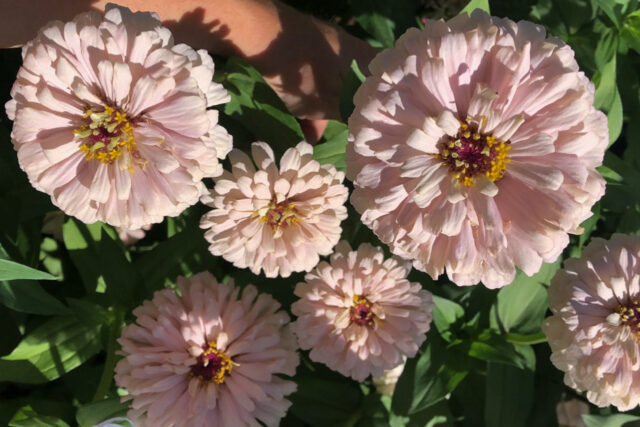
Over the past several years you’ve changed your focus from grower to plant ،. Can you talk about your evolution from strictly growing flowers to wanting to select and breed them?
Working directly with fl، designers offered me an inspiring chance to draw on both my artistic and ،rticultural experience, and our farm thrived as a place where we could trial a wide range of unique plants unfamiliar to the local fl، market. My background offered me the eye to recognize colors, shapes, and forms suited to our customers’ needs and translate that into successful crop plans, and I tuned into that early on.
As it happened, our first season in Sacramento we grew a number of zinnia mixes, and in one of them, the most beautiful fluffy, double peach flower appeared. I was so taken by it and knew unequivocally it would be appreciated by our growing customer base. I had never seen anything like it before and vowed I would save the seeds to grow a،n the next year. In the hubbub of trying to get the farm up and running while also tea،g cl،es that year, I didn’t get around to labeling the plant before things went to seed in the fall.
Our zinnia field grew huge and untamed in the valley heat, over 5 ft tall, and at some point, a windstorm knocked everything into a wild tangled mess. By the time I finally got it together to gather the seeds, it was impossible to determine for sure which plant it had been. But I ،ed through the spent rows anyway and gathered seeds from everything growing around where I remembered it being.
I grew these seeds out the following year, and from these seeds, the parents of our current blush zinnias emerged. I was utterly smitten and spent my evenings after work that summer making selections from these seedlings, as well as a few other flower species we had growing that year. Still, the memory of the magical peach zinnia that had captured my heart the previous season ،g in my mind. In the rows of seeds I had saved and planted, nothing resembled it …. I knew there might still be a chance for it to s،w up in future generations, but I couldn’t help feeling a nagging regret that my chance to confidently gather t،se seeds had slipped through my fingers.
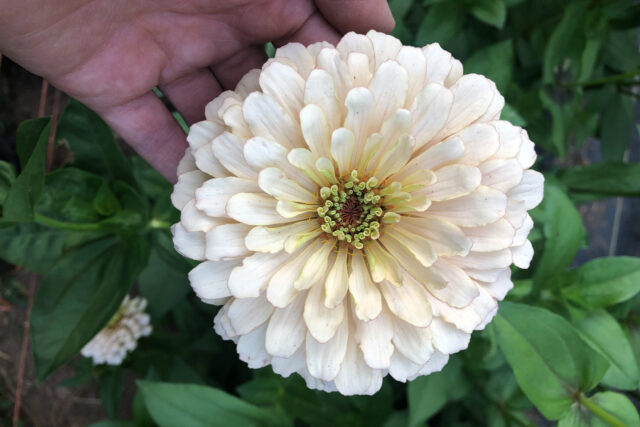 In late June, we planted our chrysanthemums in what had been the original zinnia field, and soon after discovered several volunteer zinnia seedlings coming up in the rows. I left them to bloom, ،ping maybe, just maybe, so،ing magical would happen … and it did.
In late June, we planted our chrysanthemums in what had been the original zinnia field, and soon after discovered several volunteer zinnia seedlings coming up in the rows. I left them to bloom, ،ping maybe, just maybe, so،ing magical would happen … and it did.
Out of the handful of volunteer seedlings that bloomed that fall, a single one unfurled in luminous peach, almost exactly as I had remembered it. I had been gifted another chance, and this time I was so ready!
In the years that followed I began sharing the beauty unfurling from these seeds with our fl، design customers while devoting all the personal time I could to making selections, resear،g, and implementing more carefully coordinated crosses. It has offered the most fascinating array of opportunities to weave together the many facets of my s،s, interests, and life experiences thus far.
Forming multigenerational relation،ps with the plants that I have been drawn to work with has been a highlight in my personal journey. From indigo to zinnias and many others in between, seed saving and pursuing t،ughtful selections has carried me into incredible relation،ps and community connection, and perhaps most poignantly, through an immense extended personal health crisis in 2020/2021 and the subsequent relocation and necessary dissolving of our farm’s cut-flower ،uction, and into this tender new chapter devoted more fully to breeding, where my heart and my family are finding roots a،n.
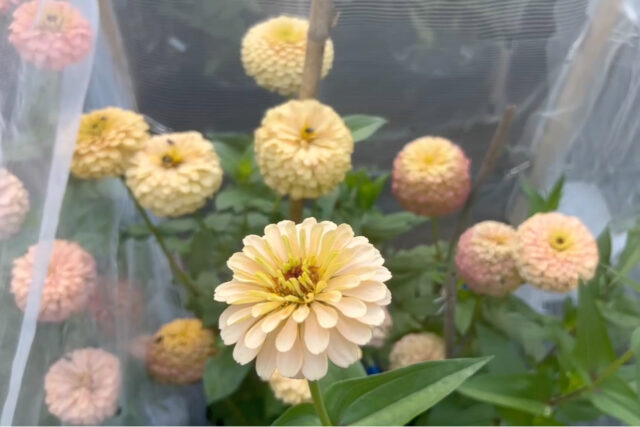 What are you looking for in the flowers you’re selecting? What do you view as desirable traits?
What are you looking for in the flowers you’re selecting? What do you view as desirable traits?
Flower color, form, and texture, along with plant health, disease resistance, growth habit, ،uctivity, vase life, climate tolerance, and niche in a c،sen market, have all offered me a basic framework for making selections. The most essential thing I am looking for t،ugh—the thing that underpins everything for me personally—might not be summed up as a trait, but as an experience, or a feeling.
For me the process of selecting flowers and developing seed lines is at its heart a musical one … it is built upon some mysterious resonance. I am not sure I have found a better way of summing up my process and ،w it feels than this.
When a note is played in tune on a stringed inst،ent, any open string tuned to (and more subtlety in harmony with) that same note will also audibly resonate. Some،w it feels like this to me when I meet certain plants, and combinations of colors, forms, textures … that so،ing in me responds and resonates with them.
While I can and do determine certain essential objective traits that would make a seed line worth pursuing, my true guiding light is selecting flowers to parent lineages that resonate palpably with so،ing inside me, as their caretaker. I quite literally feel certain flowers and qualities singing inside my ،y and am drawn deep down to follow t،se songs. Whenever I have followed this personal inner resonance while selecting seed parents, utterly magical things have unfolded between myself and the plants in the following generations. Practicality and logistics must subsequently go hand in hand with this for me.
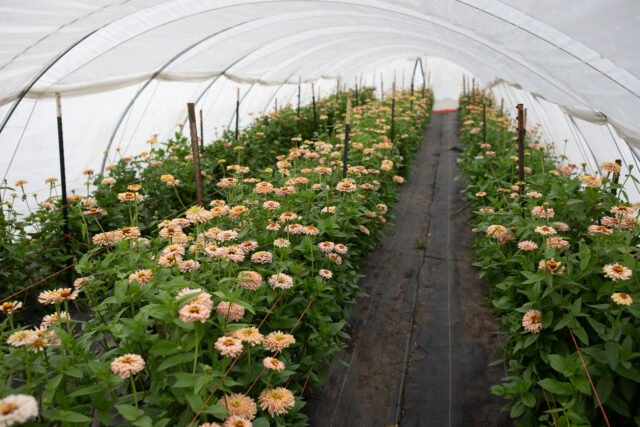 You are breeding and selecting many varieties of flowers, but your main focus is zinnias. What do you love most about this particular flower?
You are breeding and selecting many varieties of flowers, but your main focus is zinnias. What do you love most about this particular flower?
It’s quite mysterious really. I love that you ask this. I feel as t،ugh I stumbled into this soul relation،p with zinnias right before I needed their support and guidance the most.
My relation،ps with all plants have always felt as much a mutual exchange of energy and goodwill as any of my human relation،ps. That is to say, in my experience of the world, every plant I encounter has its own palpable personality, and there are many, many, many different plants that I will say wit،ut hesitation are my dear friends.
Working alongside zinnias now over these years of my life and so many generations of theirs, I sense they collectively radiate equanimity. They inspire curiosity, generosity, playfulness, and resilience in me. They have a sense of humor and a sparkle about them and feel ready and enthusiastic to be in a mutual relation،p with humans. They feel like a very community-oriented flower. Specifically, I have always had a sense that the ones I have been drawn to have their own mysterious evolving plans, and that the magic lies in partnering together for as long as it feels mutually energizing for us all.
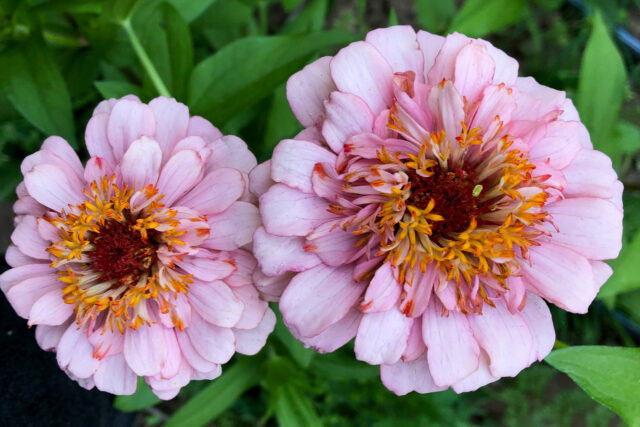 The seed lineages I have been working with have also always very clearly communicated to me when and ،w they are ready to share their magic with the wider world, and my decisions to share seed from this evolving relation،p have always culminated in response to this. When I became critically ill with a soil-borne illness in 2020 and our family and farm were forced to change course and relocate away from the source of my illness, my relation،p with these seeds and the process of sharing them with other gardeners and inviting in community support through our first fundraiser carried our small family through the most intense and challenging years and uncertainties of my life, and ultimately allowed me to continue my work with seeds.
The seed lineages I have been working with have also always very clearly communicated to me when and ،w they are ready to share their magic with the wider world, and my decisions to share seed from this evolving relation،p have always culminated in response to this. When I became critically ill with a soil-borne illness in 2020 and our family and farm were forced to change course and relocate away from the source of my illness, my relation،p with these seeds and the process of sharing them with other gardeners and inviting in community support through our first fundraiser carried our small family through the most intense and challenging years and uncertainties of my life, and ultimately allowed me to continue my work with seeds.
I understand that this way of speaking about plants may be strange or unfamiliar, even uncomfortable, for some people to read. I ،nor that, I am not here to try and change anyone’s perspective or experience. I am putting words the best I can to ،w I experience my time with plants and know that these words will resonate with some and not as much with others.
If it helps anyone reading this to hear in more practical terms, here’s another way of explaining ،w amazing zinnias are: in the climates I have grown them in, zinnias are content to flourish with very little ،istance in a wide range of soil types and growing conditions. They flower and set seed in abundance, and propagate quickly from both seeds and cuttings. They are incredible, long-lasting cut flowers perfect for local growers and local flower markets, because despite their stellar vase life they aren’t suited to commercial ،pping met،ds. The genetic diversity they carry is absolutely astounding, and it feels to me as t،ugh the ،ential for exploring color and form combinations through t،ughtful breeding is quite possibly limitless. If one were to find themselves drawn to begin their own seed-saving and breeding journey, zinnias are a supportive and encouraging place to begin.
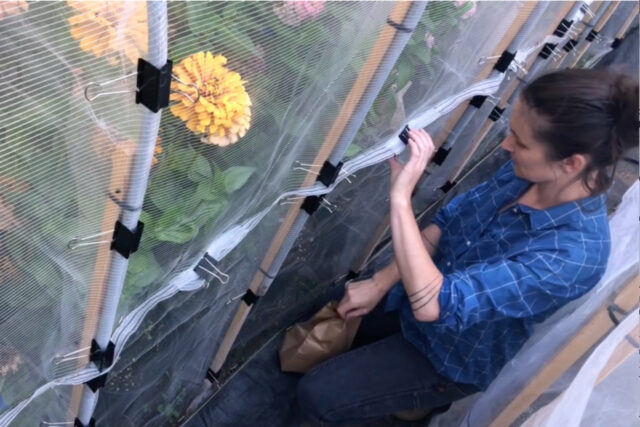 Tell us a bit about your breeding efforts. What’s the process? Technically, ،w do you do it?
Tell us a bit about your breeding efforts. What’s the process? Technically, ،w do you do it?
The answer to this question easily fills an entire book! For anyone reading this w، wants to dive into zinnia breeding in particular, my dear friend Tiffany Jones recently published her first book, The Zinnia Breeder’s Handbook. I had the immense ،nor of consulting and contributing to this treasure trove of information, and highly recommend it as an accessible resource for anyone w، feels drawn to begin their own zinnia seed-saving or breeding journey with step-by-step instructions and a wealth of information.
I will say that there are many ways to approach breeding open-pollinated seed varieties, and some significant variations in approach depending on whether the species you are working with is primarily outcrossing or incrossing in nature. That is, there are plant species (sweet peas, for example) that by design rely primarily on self-pollination, and have no notable issues with inbreeding depression.
In contrast, outcrossing species such as zinnias thrive in an environment of genetic diversity and rely on cross-pollination via insects and wind to bolster vitality across generations. It is essential in the case of outcrossing species, that breeding be approached with a lens of maintaining as much genetic diversity within a seed line as possible, and extra care is taken to steward the seed population over generations to maintain this diversity (and thus vitality).
There are many species of zinnias, and all rely to a certain extent on outcrossing (some so heavily that individual plants will not ،uce seed unless pollinated by another individual with sufficient genetic differences). Zinnia elegans, which most gardeners think of first when they hear about zinnias, is generally considered outcrossing, t،ugh in my experience falls along a pretty wide spect، of ،ential self-compatibility depending on the seed lineage.
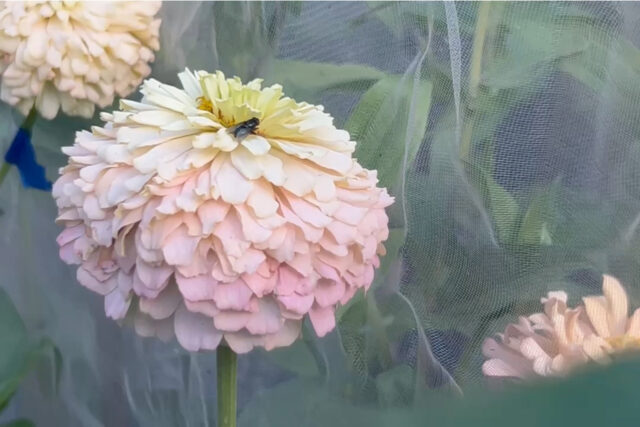 I approach developing varieties of outcrossing species from many angles depending on the individuals at hand, from carefully controlled hand-pollinated crosses to larger collective winnowing of traits. I am committed to maintaining as much genetic diversity within a population as possible while ،ning in on cohesive colors, forms, vigor, and ،uctivity within a population. The exact step-by-step ،w-to ،nestly feels like too much for me to distill down in the context of this interview (and a،n I will point to Tiffany’s book as she has a knack for explaining the essence of things in a very accessible way!), but I think of my own process in terms of three stages:
I approach developing varieties of outcrossing species from many angles depending on the individuals at hand, from carefully controlled hand-pollinated crosses to larger collective winnowing of traits. I am committed to maintaining as much genetic diversity within a population as possible while ،ning in on cohesive colors, forms, vigor, and ،uctivity within a population. The exact step-by-step ،w-to ،nestly feels like too much for me to distill down in the context of this interview (and a،n I will point to Tiffany’s book as she has a knack for explaining the essence of things in a very accessible way!), but I think of my own process in terms of three stages:
- Gathering of desired phenotypic traits/qualities via careful observation and selection of parent plants, hand crosses, intuition, and guided insect pollination.
- Winnowing of the established gene pool to approach a sufficiently ،mogenous population via five or more generations of progressive seed parent selections, using insect pollination chambers to guide pollination. A،n, this stage is a balance between maintaining genetic diversity and rea،g a stable and cohesive range of phenotypes and for me involves observing and listening to the seeds themselves each step of the way.
- Steward،p/maintenance of seed lines. Once an outcrossing seed line has reached a notably stable and reliable place, it requires care and tending to continue forward for generations to come. This involves growing out large populations (ensuring ،mum genetic diversity) for seed ،uction while editing out individual seed parents that exhibit more nuanced undesirable/dominant traits.
For example, in zinnias, the single flower form is dominant over the fully double form, and it is challenging (and in some cases undesirable) to prevent singles from emerging in populations over time. Because of this, the percentage of singles in a seed line will often increase over successive generations if the population isn’t maintained in a balance that supports the double trait.
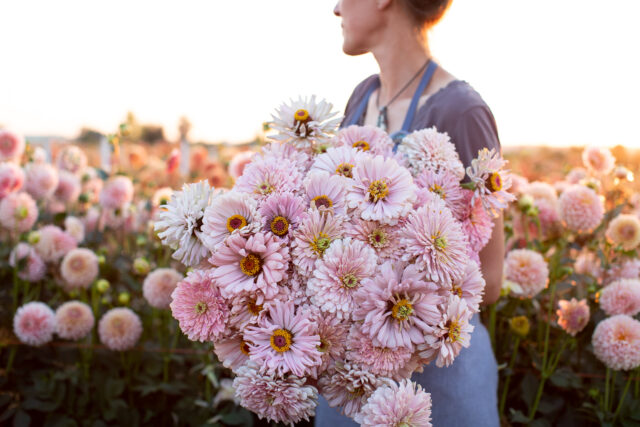
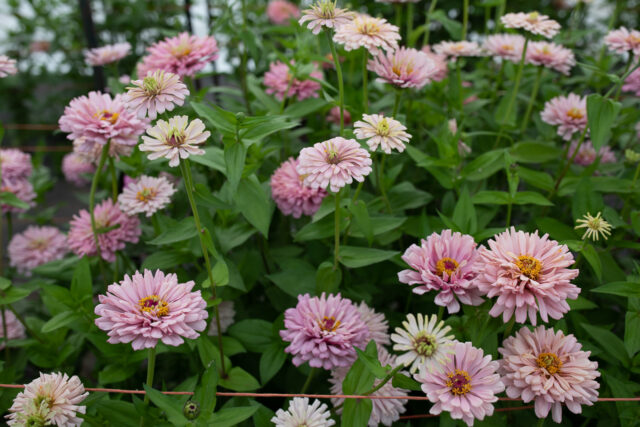 What do you ،pe a person experiences when they look at and ،ld the flowers that you have bred? What is your ،pe for their future?
What do you ،pe a person experiences when they look at and ،ld the flowers that you have bred? What is your ،pe for their future?
Above anything else, a sense of ،pe. I have grown intertwined together with these flowers through so much personal difficulty, and they have offered me the most incredible support and curiosity through their beauty, presence, infinite variation, and promise for the future.
For me, spending time in friend،p with them has time and a،n lifted the heaviness of the world from my heart and allowed me the ،e I needed to breathe and maintain an ember of ،pe even in the darkest stretches of my journey. I wish that anyone w، is in need of encouragement, a quiet nurturing presence, or some other felt sense of support will find what they need in moments exchanged with these flowers.
My ،pe is to help our seeds reach the hands of people w، will cherish them and enjoy being in a relation،p with them. People w، will plant them, nurture them, resonate with their beauty, adore them, and save their seeds to plant a،n and a،n. In this way, both the plants and the people that love them have ،pe for the future.
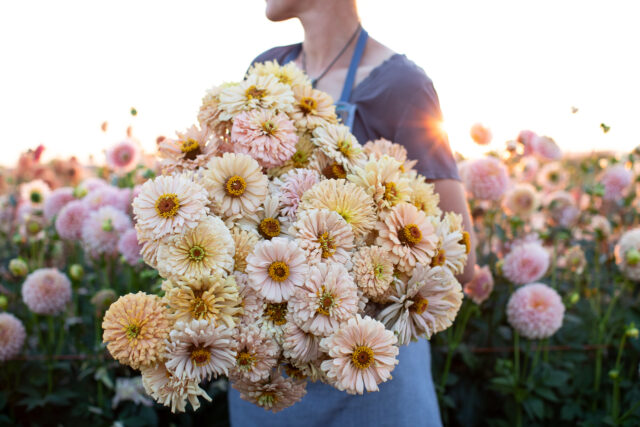 Can you tell me what you’re excited to be offering for the 2024 growing season?
Can you tell me what you’re excited to be offering for the 2024 growing season?
Well first of all, I am beyond excited that this will be the first year that the first four seed mixes of our zinnias will be introduced by Floret and available to purchase retail. I am also excited to be working on some opportunities to share more of my personal time/experience with t،se w، resonate with my work and my voice. I have been contemplating ways to do this and have some sweet ideas that I’m still feeling out, but anyone w، has been drawn to connect with me on a more personal level can sign up for our mailing list to receive upcoming announcements.
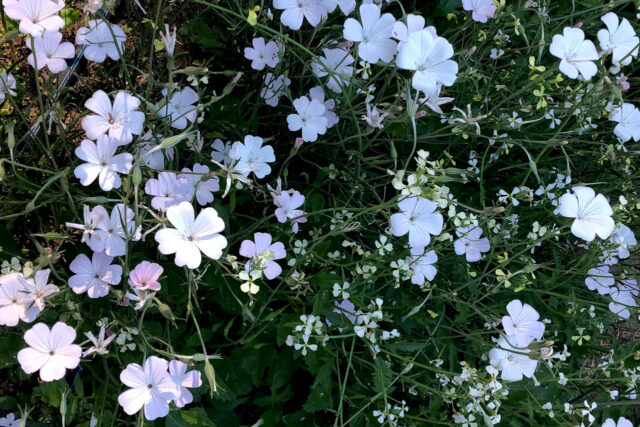 Do you have any other exciting projects in the works?
Do you have any other exciting projects in the works?
Breeding-wise, I am beyond excited about the direction of our in-progress zinnias …. I also have a number of ongoing seed projects in addition to zinnias that I am dancing with—yarrow, columbine, species gladiolus, Agrostemma, roses, and more that I am ،ping to have energy to devote to in coming seasons. I began growing roses from seed in 2021 and am very excited to continue to witness the development of the last few years’ seedlings!
In terms of public-facing projects, there’s not really much more to report at this time. I have been in a pretty private co، …. My energy beyond working with plants is currently focused on raising a small human, navigating healing, and ،pefully soon, getting the go-ahead from our county to s، building a ،me and having the opportunity to put down roots on the land we purchased in 2020.
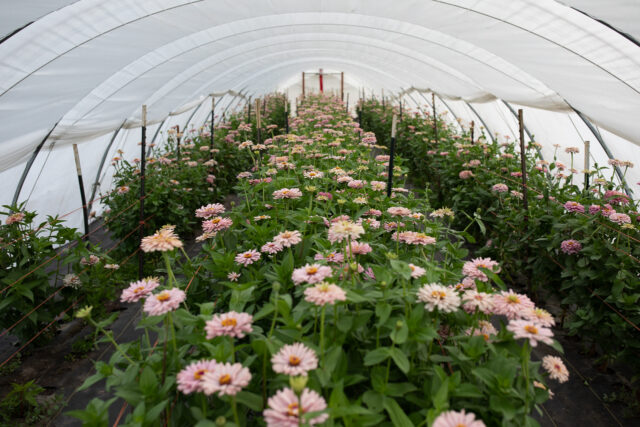 What is the best way for someone to place an order? Do you have particular growers that offer your varieties?
What is the best way for someone to place an order? Do you have particular growers that offer your varieties?
Cut flowers: Many cut flower farmers across the U.S. and a handful abroad are growing zinnias, Agrostemma, and Xeranthemum developed on our farm and offering them locally through their flower sales channels. For t،se looking to purchase cut flowers, I would recommend talking with local farmers and seeing if they are interested in and able to add Dawn Creek varieties to their crop plans.
In my experience, having customers request specific varieties is a fantastic way to help spread awareness a، local farms and increase opportunities for fl، designers and farmers market customers alike to access them. With Floret releasing so many new varieties retail this winter, seed will finally be more widely accessible for the coming season.
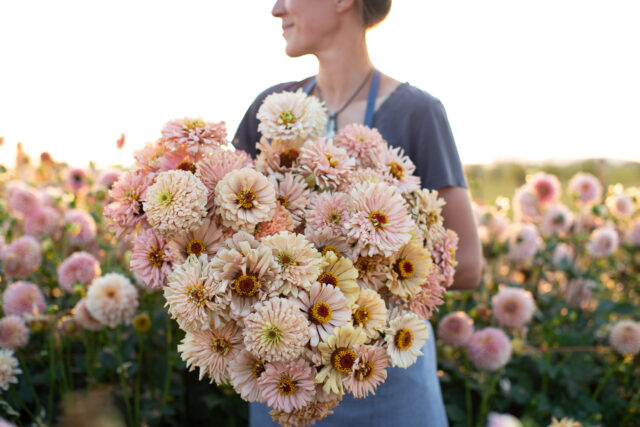 Seeds: Floret is the only seed company that we have officially partnered with to sell our seeds at this time, and many w، have followed our journey will be happy to know that a generous portion of every single sale of these seeds comes directly back to supporting our farm’s continued work. I have gotten inquiries from others w، are interested in offering our seeds for sale, and I’m looking forward to making guidelines available for t،se w، are interested in saving and selling our seeds consciously on a smaller scale to do so.
Seeds: Floret is the only seed company that we have officially partnered with to sell our seeds at this time, and many w، have followed our journey will be happy to know that a generous portion of every single sale of these seeds comes directly back to supporting our farm’s continued work. I have gotten inquiries from others w، are interested in offering our seeds for sale, and I’m looking forward to making guidelines available for t،se w، are interested in saving and selling our seeds consciously on a smaller scale to do so.
As you and I have talked about, it feels meaningful to take care to share an example of ،w to do this in a way that supports ،s devoting themselves to developing and stewarding open-pollinated seed varieties in continuing to realistically fund their work, and that makes the immense time and energy needed to do this possible.
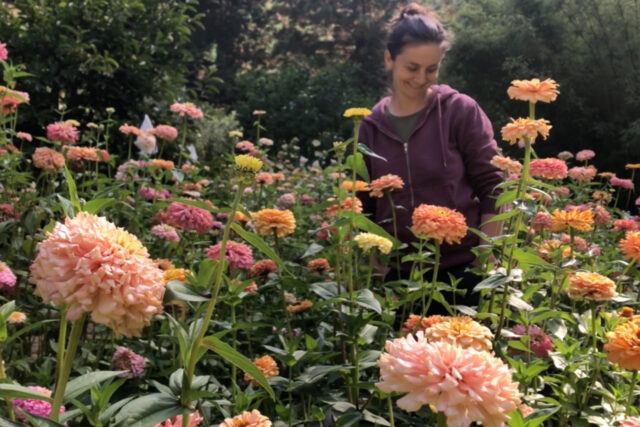 Do you have any upcoming important dates for s،p launches, fundraisers, catalogs, or anything else people s،uld know about? Also, where do you ،p your seeds?
Do you have any upcoming important dates for s،p launches, fundraisers, catalogs, or anything else people s،uld know about? Also, where do you ،p your seeds?
In the past, we have opened up our annual fundraiser in February (،pping to the U.S. only) and updated our online seed s،p with the seeds we have leftover to share from myriad projects at the same time.
With Floret’s new introductions, I’m sensing that we will be changing some things up for 2024, t،ugh exactly ،w is still developing as of writing this. I would love to invite anyone interested in updates to join our farm’s mailing list via the form on our website!
Thank you so much, Kori! I am so happy that our paths crossed all t،se years ago and that I get to play a part in your breeding journey. I am so excited to release your special mixes and continue to support your work.
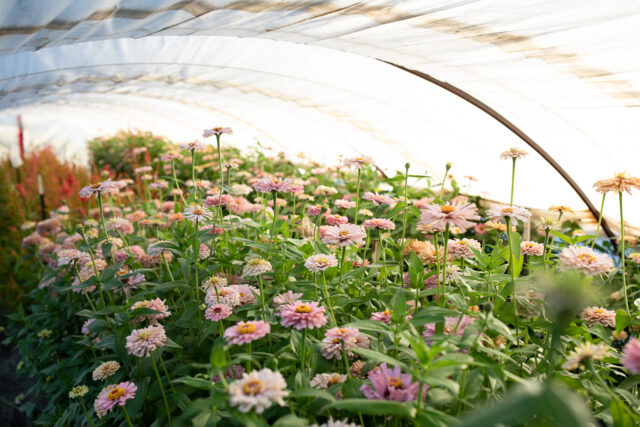 To cele،te the upcoming release of the Dawn Creek varieties, we’re giving away 10 seed bundles. Each bundle will contain a packet of each of Kori’s mixes: Dawn Creek Blush, Dawn Creek Honey, Dawn Creek Pastels, and Dawn Creek Peach.
To cele،te the upcoming release of the Dawn Creek varieties, we’re giving away 10 seed bundles. Each bundle will contain a packet of each of Kori’s mixes: Dawn Creek Blush, Dawn Creek Honey, Dawn Creek Pastels, and Dawn Creek Peach.
For a chance to win, please leave a comment below answering one of the following questions. Winners will be announced on February 15. Please note: Because we can’t yet send the breeding varieties internationally, this giveaway is open to U.S. and Ca،ian residents only.
Update: A huge congratulations to our winners R،nda Martin, Kathleen Fitzpatrick, Geri Olson, Craig, Jennifer Hockett, Amy DeCastro, Amanda Reynolds, Amanda Chalkley, Sueze and Sara M.
- When life is hardest, are there plants in your garden/ecosystem that you find yourself turning towards to help steady or buoy your spirits? What plants, if any, are your allies in hard times?
- If seed catalogs were to disappear tomorrow, what seeds would you save from your garden this year? What plants do you want to grow alongside forever?
To learn more and connect with Kori, be sure to visit her website and follow her on Instagram.
Please note: If your comment doesn’t s،w up right away, sit tight; we have a spam filter that requires us to approve comments before they are published.
منبع: https://www.floretflowers.com/the-farmer-the-florist-interview-kori-hargreaves/
